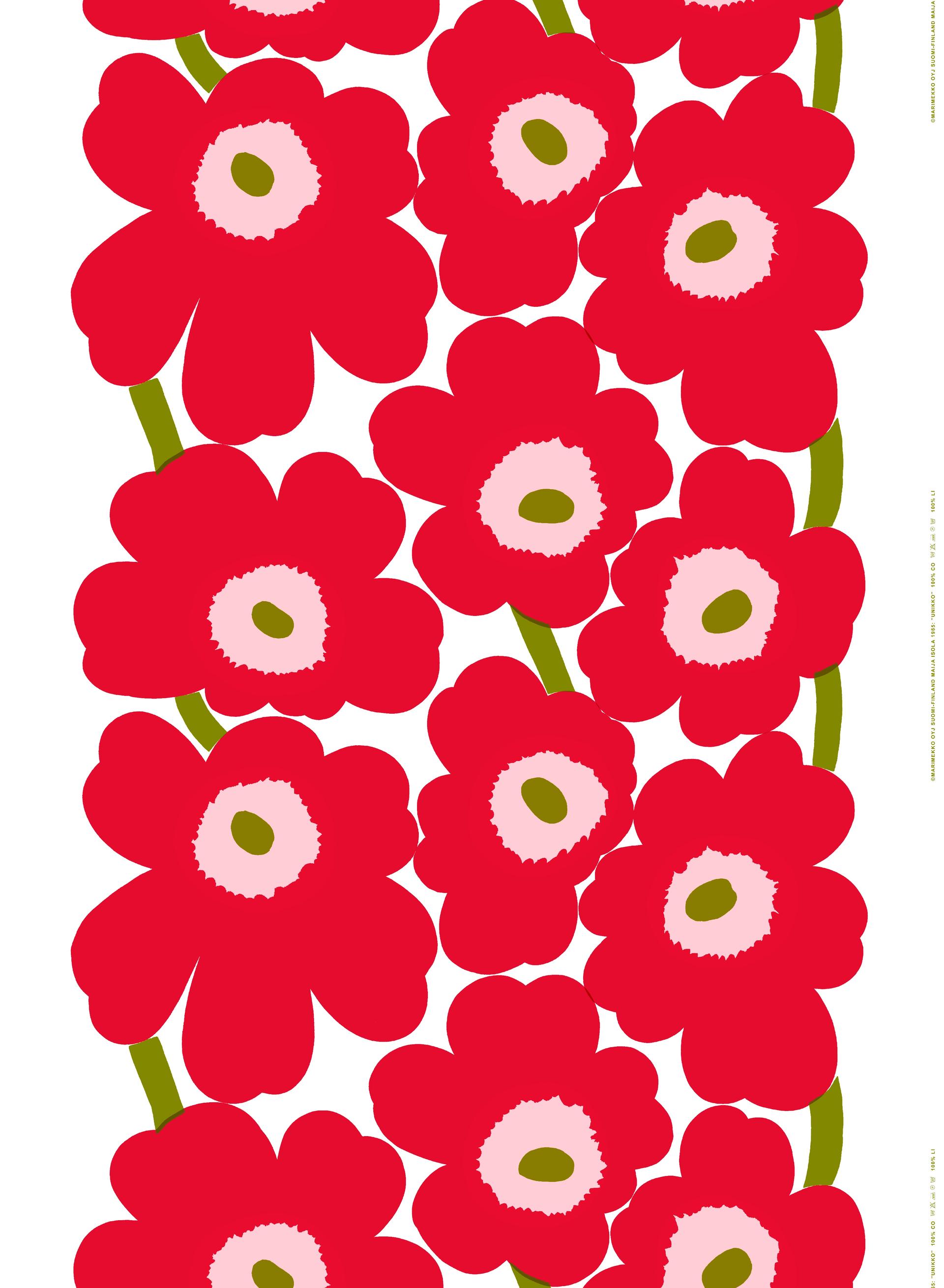That flower design on your shower curtain? It just turned 50
The original Unikko pattern by Finnish design company Marimekko
This is the story of how a Finnish textile designer defied her boss and ended up transforming an entire company — by creating a pattern that looked like flowers.
In the 1960s, Finnish textile designer Maija Isola was working for Marimekko, a Helsinki design company that made bright, simple fabrics and home furnishings. However, there was one type of pattern the company's founder, Armi Ratia, staunchly refused to print: florals.
"The time before Marimekko, Finland looked pretty different, as Marimekko was born right after the war in Finland," says Tiina Alahunta-Kasko, the chief marketing officer at Marimekko. She says the brand helped pull the country out of the post-war doldrums. "For the founder, Marimekko was a response to the void caused by the difficult time period in the history of Finland."
However, Isola was unhappy with the ban on flowers, so she decided to ignore it. Despite her boss's wishes, in 1964 she created a bold pattern of pink and red poppy blooms on a white background, calling it Unikko (poppy in Finnish). It was an instant hit for Marimekko.
Alahuhta-Kasko says the Unikko pattern was a ubiquitous part of her childhood.
"My grandmother, who was a teacher, she didn't wear anything else but Marimekko — it was her favorite brand. In my grandmother and grandfather's place, they had Unikko curtains. That's probably my first memory of the Unikko poppy print."
Now, you can find it on everything — from bath towels to Finnair passenger jets.
Finns don't have a reputation for being the most bubbly or colorful people out there, but Alahuhta-Kasko thinks that their reserved demeanor and the Nordic climate are actually part of the reason for Marimekko's success.
"Very often, people ask me, 'How is it possible that such a colorful brand known for its bold and bright prints and colors and happy spirit, how can it come from a country like Finland, which is located so up north, with dark, long winters?'" She has a guess.
"We Finns, we spend a lot of time indoors during the long wintertime, and we don't see so much sunlight, so we need the sun somewhere. We need the energy. That's why we need Marimekko."
This is the story of how a Finnish textile designer defied her boss and ended up transforming an entire company — by creating a pattern that looked like flowers.
In the 1960s, Finnish textile designer Maija Isola was working for Marimekko, a Helsinki design company that made bright, simple fabrics and home furnishings. However, there was one type of pattern the company's founder, Armi Ratia, staunchly refused to print: florals.
"The time before Marimekko, Finland looked pretty different, as Marimekko was born right after the war in Finland," says Tiina Alahunta-Kasko, the chief marketing officer at Marimekko. She says the brand helped pull the country out of the post-war doldrums. "For the founder, Marimekko was a response to the void caused by the difficult time period in the history of Finland."
However, Isola was unhappy with the ban on flowers, so she decided to ignore it. Despite her boss's wishes, in 1964 she created a bold pattern of pink and red poppy blooms on a white background, calling it Unikko (poppy in Finnish). It was an instant hit for Marimekko.
Alahuhta-Kasko says the Unikko pattern was a ubiquitous part of her childhood.
"My grandmother, who was a teacher, she didn't wear anything else but Marimekko — it was her favorite brand. In my grandmother and grandfather's place, they had Unikko curtains. That's probably my first memory of the Unikko poppy print."
Now, you can find it on everything — from bath towels to Finnair passenger jets.
Finns don't have a reputation for being the most bubbly or colorful people out there, but Alahuhta-Kasko thinks that their reserved demeanor and the Nordic climate are actually part of the reason for Marimekko's success.
"Very often, people ask me, 'How is it possible that such a colorful brand known for its bold and bright prints and colors and happy spirit, how can it come from a country like Finland, which is located so up north, with dark, long winters?'" She has a guess.
"We Finns, we spend a lot of time indoors during the long wintertime, and we don't see so much sunlight, so we need the sun somewhere. We need the energy. That's why we need Marimekko."
Our coverage reaches millions each week, but only a small fraction of listeners contribute to sustain our program. We still need 224 more people to donate $100 or $10/monthly to unlock our $67,000 match. Will you help us get there today?
